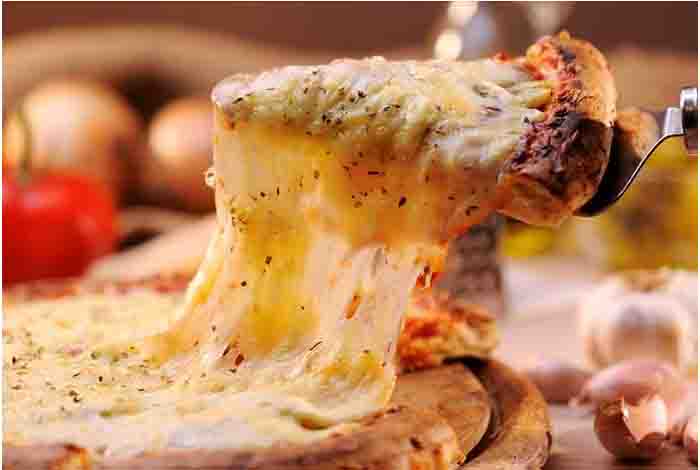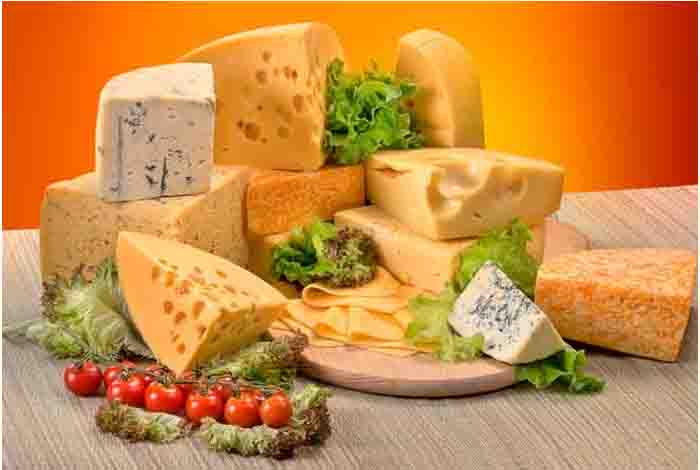
Exploring the Healthy Side of Cheese

Cheese! This word itself is enough to leave a satiating, overwhelming effect on your culinary senses. It is nutrient rich and scrumptiously tasty, but it is best to consume it in smaller quantities.
Kelly Pritchett, a registered dietitian and spokeswoman at the Academy of Nutrition and Dietetic, explains that cheese contains several important nutrients like protein, zinc, vitamin B12 and calcium. However, you must remember that the calories can add up really fast if you don’t pay attention to the quantity you are consuming.
Hard cheeses have more calories than the softer ones. An ounce (approximately two tablespoons) each of whole-milk mozzarella cheese, feta cheese, whole-milk ricotta have 85 calories, 75 calories and 50 calories, respectively. Whereas, one ounce (one slice) of Swiss cheese has around 108 calories and the same quantity of cheddar cheese has 114 calories. You can get the same amount of calories and feel full in a similar way with one cup of black bean soup.
Cheese also has high amounts of saturated fats. This fat is believed to increase the level of LDL cholesterol, which is also known as “bad cholesterol.” Statistics show that cheese is one of the leading sources of saturated fats in a conventional U.S. diet. [1] Another research indicates that the consumption of full-fat cheeses do not negatively affects LDL cholesterol in opposition to general belief due to its high saturated fat content. [2]
Gregory D. Miller, chief science officer at the National Dairy Council, explains that it is still not clear as to why this happens, but it could possibly due to the nutrients present in cheese, including protein and calcium that somehow modify the way fat is metabolized or absorbed.
Why Consuming Hard Cheeses Is Beneficial?

When we talk about the fat content, some cheeses have lesser fat than others. The higher the fat content, higher would the calorie content. Cottage cheese has the least amount of fat – only one gram per ounce. Ricotta cheese has four grams of fat per ounce, while mozzarella and feta has six grams of fat per ounce each. Cheddar, Swiss and Parmesan have highest fat content, with 9, 8 and 7 grams per ounce, respectively.
Pritchett advises that using soft cheeses like mozzarella instead of cheddar can be helpful if you want to cut unnecessary calories from your diet. Surprisingly, despite of high fat content, cheddar cheese is quite beneficial for the teeth. It provides calcium, protein and also helps in generating saliva, which reduces your mouth’s acidity and prevents cavities.
Pritchett further suggests that you should use cheese only as a flavor enhancer and not make cheese the main ingredient of any dish. You can sprinkle grated goat cheese or feta cheese over your dishes or salads to enhance their favor. A bit of cheese can pep up your soup too. If you enjoy consuming cheese along with crackers, limit its quantity to just one ounce.
This is equivalent to a several dominos for the soft cheese varieties like Havarti, Brie or goat cheese and around 4 small cubes for harder ones like cheddar or Swiss. Limiting the quantity will also keep your sodium intake in check. A single ounce of feta cheese can have 260 milligrams of sodium while an ounce of hard Parmesan can have around 390 milligrams.
You can surely enjoy your cheese cube or slice whenever you want but be careful not to go overboard with it.










